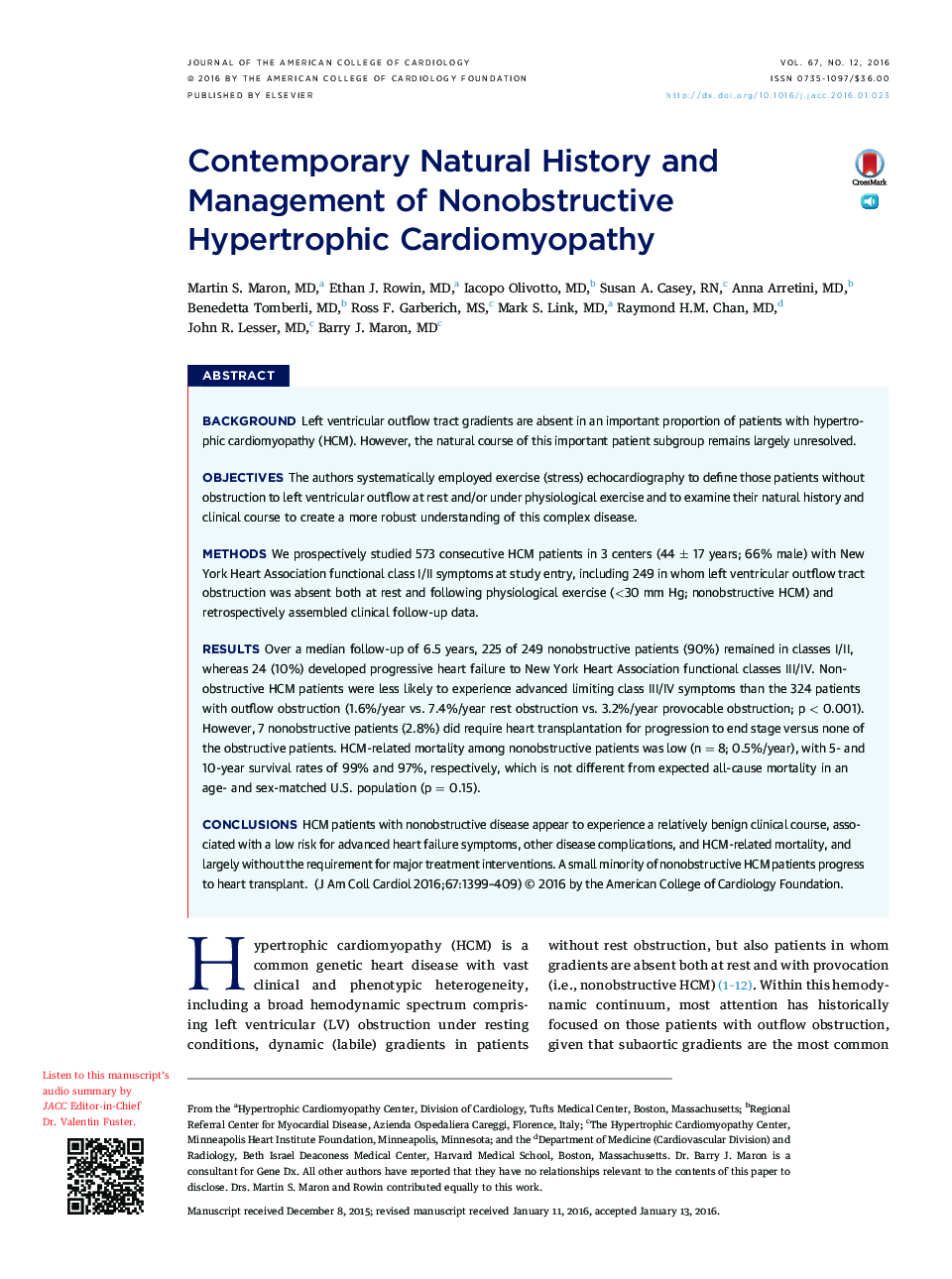| Article ID | Journal | Published Year | Pages | File Type |
|---|---|---|---|---|
| 5982109 | Journal of the American College of Cardiology | 2016 | 11 Pages |
BackgroundLeft ventricular outflow tract gradients are absent in an important proportion of patients with hypertrophic cardiomyopathy (HCM). However, the natural course of this important patient subgroup remains largely unresolved.ObjectivesThe authors systematically employed exercise (stress) echocardiography to define those patients without obstruction to left ventricular outflow at rest and/or under physiological exercise and to examine their natural history and clinical course to create a more robust understanding of this complex disease.MethodsWe prospectively studied 573 consecutive HCM patients in 3 centers (44 ± 17 years; 66% male) with New York Heart Association functional class I/II symptoms at study entry, including 249 in whom left ventricular outflow tract obstruction was absent both at rest and following physiological exercise (<30 mm Hg; nonobstructive HCM) and retrospectively assembled clinical follow-up data.ResultsOver a median follow-up of 6.5 years, 225 of 249 nonobstructive patients (90%) remained in classes I/II, whereas 24 (10%) developed progressive heart failure to New York Heart Association functional classes III/IV. Nonobstructive HCM patients were less likely to experience advanced limiting class III/IV symptoms than the 324 patients with outflow obstruction (1.6%/year vs. 7.4%/year rest obstruction vs. 3.2%/year provocable obstruction; p < 0.001). However, 7 nonobstructive patients (2.8%) did require heart transplantation for progression to end stage versus none of the obstructive patients. HCM-related mortality among nonobstructive patients was low (n = 8; 0.5%/year), with 5- and 10-year survival rates of 99% and 97%, respectively, which is not different from expected all-cause mortality in an age- and sex-matched U.S. population (p = 0.15).ConclusionsHCM patients with nonobstructive disease appear to experience a relatively benign clinical course, associated with a low risk for advanced heart failure symptoms, other disease complications, and HCM-related mortality, and largely without the requirement for major treatment interventions. A small minority of nonobstructive HCM patients progress to heart transplant.
